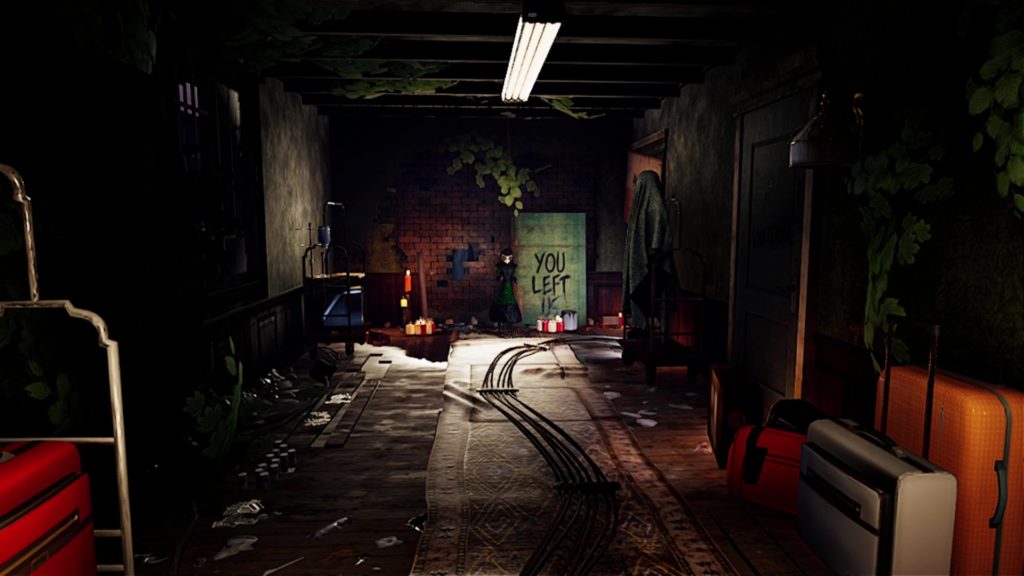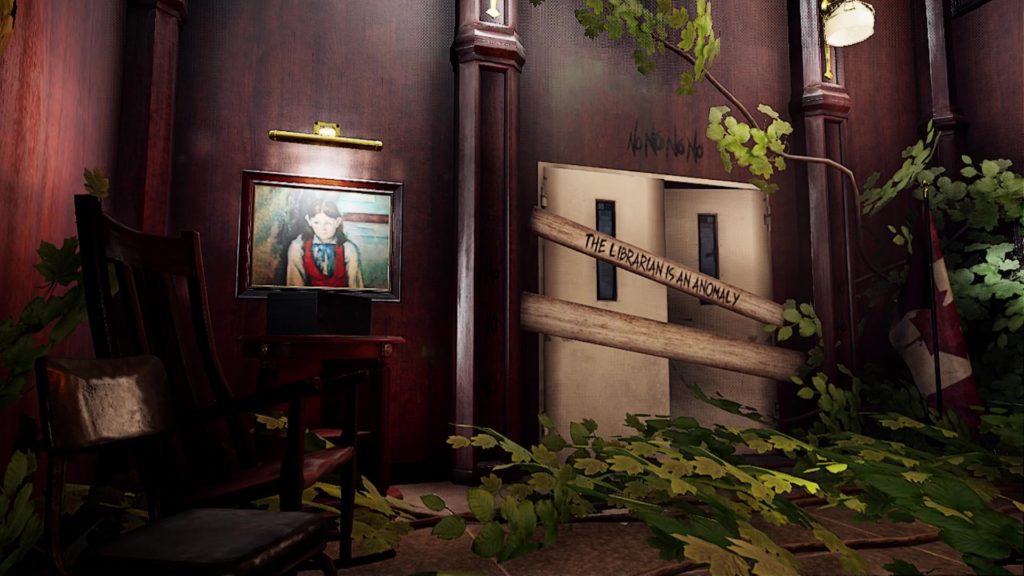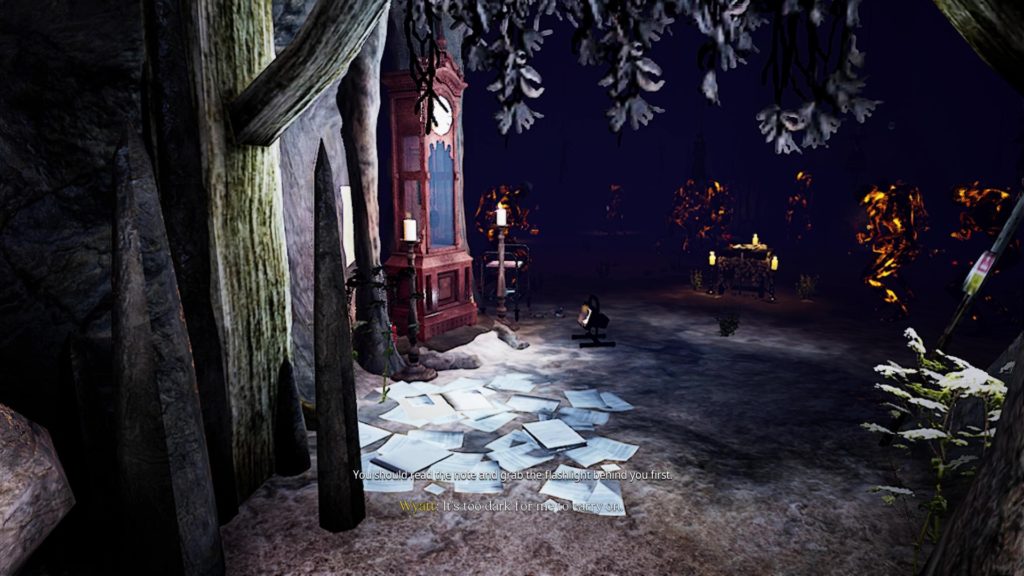Dying another death in The Sorrowvirus
Prolific localisation and porting company eastasiasoft has a lot of strings to their bow. As well as bringing us a wide variety of interesting lewd games, they’re also very much in the business of porting excellent indie titles from PC to console platforms, and the latest of these is The Sorrowvirus.
The Sorrowvirus is intended as a short story companion piece to an unreleased multiplayer horror game known as Faceless. Thankfully, no knowledge of Faceless is required to enjoy The Sorrowvirus, since despite being listed as Early Access on Steam, Faceless is not available to purchase and play at the time of writing.
Indeed, it seems The Sorrowvirus developer Watchmaker actually has more enthusiasm for these side projects than the main Faceless project right now, since it appears there are more in the works. I’m not complaining; personally I’d rather play a well-crafted single-player horror experience than a multiplayer game.

And thankfully, The Sorrowvirus is a very well-crafted single-player horror experience with an immensely intriguing premise. Taking on the role of a young man called Wyatt, it’s your job to navigate the otherworldly dimension of Purgatory in an attempt to figure out exactly what is going on, why you keep dying from your numerous illnesses and being brought back to life, and whether or not it’s possible to escape this endless cycle of death and rebirth you appear to be trapped in.
Given that premise, it would perhaps be easy for some to dismiss The Sorrowvirus as a “walking forwards to sad piano music” breed of narrative game, but rest assured, this is absolutely a horror game — and, moreover, it has some very interesting structural and mechanical elements to it that elevate it well above your average linear once-and-done “walking simulator” kind of game.
As the premise implies, The Sorrowvirus is a cyclical game intended to be played multiple times. All told, there are four main cycles through the narrative, each of which changes things like the notes you find and the audio recordings you stumble across; there are even some locations you can only reach on certain cycles. Thus, in order to get the full picture of the story, it’s best to play through the game four times, with each run being done in a single sitting.

Indeed, the “single sitting” part isn’t optional; there’s no in-game save system, meaning each time you start you have to go from the beginning again. Thankfully, a single run through the game only takes somewhere in the region of 30-45 minutes or so — quicker when you’ve done it once and you know what you need to pay attention to and what is simply background colour — and thus you can quite feasibly knock out all four cycles of the game in a single evening should you so desire.
In fact, note that I say it’s best to play the game four times, not that it’s obligatory to. That’s because completely separate from the four distinct cycles, there are four endings to the narrative. The exact ending you attain depends on two optional actions you can take over the course of a single run. Both of these involve parsing clues hidden in the environment to unlock a combination lock, and whether or not you complete either or both of these tasks determines which conclusion you get. As you might expect, the “true” ending (which is still a bit of a downer, it has to be said) requires you to complete both tasks.
Arguably the conditions for unlocking these doors are a little obtuse if you’re not sure what you’re looking for — though the third cycle around the game provides an important hint for one of them, as well as giving you a nudge that you should perhaps be paying closer attention to certain aspects of the notes you find around the place. Regardless of whether or not you sought help to get these mysterious doors open, it’s still satisfying to succeed, since the exact combinations you need are randomised, meaning the most any guide can tell you is where to find the information you’ll need to use.

Outside of these two main “puzzles” of sorts, the majority of The Sorrowvirus sees you proceeding through the warped world of Purgatory, uncovering fragments of the narrative and advancing towards an inevitable conclusion. Sometimes you’ll simply need to keep going forwards; at others you’ll need to locate hidden items around an environment, or parse out clues in order to solve a puzzle.
This mix of gameplay styles keeps The Sorrowvirus interesting and compelling from a gameplay perspective as well as a narrative one; in other words, there’s much more of an “adventure game” feel to this than the “theme park attraction” some games like this can end up feeling like.
It helps, of course, that the environments in The Sorrowvirus are absolutely beautiful. They’re packed with detail, incredibly atmospheric and evocative, and often quite unsettling in their finer details. The tendency of liquids in Purgatory to flow upwards in complete defiance of gravity is especially upsetting, but then so too is the game’s tendency to change the scenery behind you, meaning that you’ll often reach the end of a corridor, turn around and discover that the place you just came from is no longer present. This latter aspect is used to great effect to create a sense of disorientation.

This is especially effective, because the environments in The Sorrowvirus are clearly designed to reflect real-life locations that are relevant to the plot you gradually uncover as you explore — but they’re twisted somehow, and the way in which they are connected together makes little to no sense. On top of that, each of the four cycles sees Wyatt enduring a different level of “sanity”, which affects certain aspects of how the environments are presented, as well as the presence of enemies.
Yes, there is a threat aspect in The Sorrowvirus, though this isn’t a “run and hide in a cupboard” sort of horror game. Rather, the “Anomalies”, as the enemies are called, simply take the form of static obstacles that happen to kill you if you touch them. They don’t chase you and so long as you’re careful about where you walk, don’t get in the way all that much — they just ensure that you stay on your toes and observe your environment carefully, which you should be doing anyway.
There’s also supposedly a time limit aspect to the game, though it’s honestly difficult to tell if this isn’t quite implemented properly or if it’s just so insignificant as to not really factor into the experience at all.

You’re supposed to “check in” with grandfather clocks as you progress through the game in order to create checkpoints (in case you stumble into an Anomaly) and also to “keep track of time”; I would have assumed that the time shown on the grandfather clocks’ faces would reflect how much time you had left to complete your run through Purgatory, but with each new clock I found, the time didn’t seem to have advanced at all, making it feel as if there wasn’t really a threat to worry about.
Aside from this little niggle — which may simply be me misunderstanding what the game was going for — The Sorrowvirus is an excellent first-person horror game. It tries something a little different with its mechanics, narrative and structure and is all the better for it. The story is compelling, interesting and creative, the presentation is excellent — though both the frame rate and background music occasionally stutters a bit on the Switch version — and the gameplay is satisfying.
It’s just a shame this had to release the same week as the new version of The Stanley Parable, because as a result I suspect there’s only one first-person narrative-centric game on people’s minds right now. Don’t sleep on The Sorrowvirus, though; this is a great horror game, and well worth adding to your collection.
The Sorrowvirus is available now for Nintendo Switch, PS4/5 and Xbox One/Series blahdeblah. Screenshots from the Switch version. Thanks to eastasiasoft for the review copy!
Join The Discussion
Rice Digital Discord
Rice Digital Twitter
Rice Digital Facebook
Or write us a letter for the Rice Digital Friday Letters Page by clicking here!
Disclosure: Some links in this article may be affiliate links, which means we may earn a small commission if you make a purchase after clicking on them. This is at no additional cost to you and helps support Rice Digital!
- Letter from the Editor: passing the torch - June 30, 2023
- Super Woden GP 2 is looking promising - June 30, 2023
- Inti Creates is making a 32 bit-style Love Live action platformer - June 26, 2023







